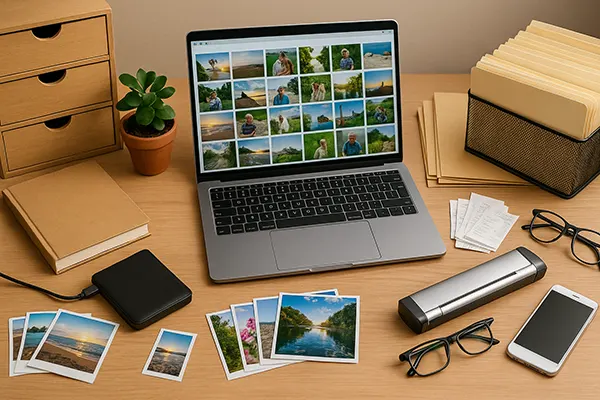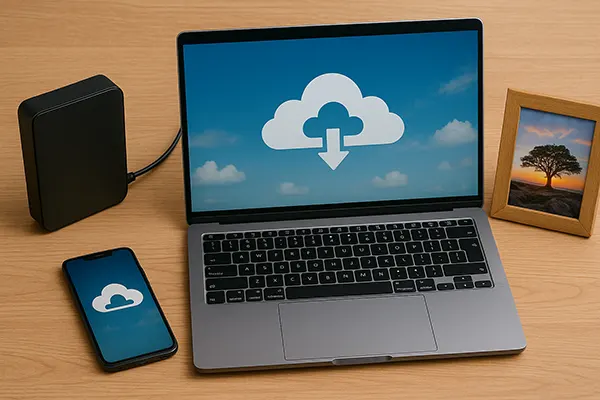
Digital Order at Home: Organising and Archiving Photos, Documents, and Receipts
In modern households, digital clutter can be as overwhelming as physical mess. Photos pile up on smartphones, documents scatter across different folders, and receipts often get lost before they are needed. Establishing a structured system for storing and archiving digital files is essential for saving time, ensuring security, and maintaining peace of mind. With the right approach, your home digital archive can become just as tidy and functional as a well-organised wardrobe or kitchen.
Organising Digital Photos Effectively
Family photos are precious memories, but they are often left in chaotic folders or multiple devices. The first step is to centralise storage by transferring all images from phones, tablets, and cameras into one chosen device or a trusted cloud service. This reduces the risk of duplicates and makes them easier to sort.
Once centralised, create a folder structure that matches your lifestyle. Many people prefer chronological organisation – by year and month – while others choose thematic categories such as holidays, birthdays, or family events. Naming conventions are also vital; clear file names like “2025-07-Beach-Holiday” will help you quickly identify what you are looking for.
Finally, consider adding metadata or tags. Most modern photo management software allows you to tag images with keywords, people’s names, or locations. This makes it possible to locate a single photo among thousands in just seconds, without endlessly scrolling.
Backing Up and Preserving Photos
Photos can easily be lost through accidental deletion or device failure, so backups are critical. A two-tier strategy is often recommended: one local backup on an external hard drive and one cloud-based backup for offsite security. This ensures that even if a device is damaged, your photos remain safe.
Another important aspect is regularity. Schedule automatic backups, whether weekly or monthly, so you do not need to rely on memory. Automation eliminates the human error of forgetting and guarantees consistency in protection.
In addition, new AI-powered photo services now allow automatic categorisation and duplicate detection, reducing unnecessary storage consumption. This helps streamline your archive while maintaining quality.
Managing Household Documents
From bills and warranties to medical records and school papers, household documents tend to accumulate in messy piles. Digital organisation can resolve this by scanning physical documents and storing them systematically. A dedicated scanner or even a reliable smartphone scanning app can convert paper into searchable PDFs.
Once digitised, structure folders clearly. For example, create categories such as “Financial,” “Health,” “Property,” and “Education.” Inside each, subfolders by year can help you track the timeline of important records. Clear labelling ensures that even years later, you can quickly locate the file you need.
Security should not be overlooked. Sensitive documents like passports or bank statements should be encrypted or stored in password-protected folders. Modern operating systems and cloud services offer built-in options for secure storage, ensuring that confidential information remains protected.
Archiving Receipts and Warranties
Receipts for large purchases are often required for warranty claims or tax purposes, but they fade quickly on paper. Scanning receipts immediately after purchase ensures you always have a digital backup. Smartphone apps can help by automatically categorising receipts into relevant folders.
For warranties, it is useful to keep a dedicated folder named “Warranties & Guarantees.” Pair scanned receipts with manuals or guarantee documents in the same folder. This way, if a product fails, you can instantly access all necessary documents for a claim.
Some financial apps now integrate receipt scanning with expense tracking, offering a combined view of your purchases. This can simplify household budgeting while keeping your archive neat.

Setting Up a Reliable Backup System
Having well-organised digital files is only half the solution; safeguarding them through backup is equally important. Many households neglect backup until data loss occurs, but proactive planning can prevent significant frustration. The key is redundancy and regularity.
Experts recommend the “3-2-1” strategy: keep three copies of your data, store them on two different types of media, and ensure one copy is stored offsite. This method drastically reduces the chances of complete data loss. For instance, you might keep files on your computer, an external hard drive, and a cloud service.
Equally important is monitoring your storage devices. External drives should be replaced every few years to avoid hardware failures. Cloud services should be checked for storage limits and renewal policies to ensure your data does not suddenly disappear.
Smart Tools for Home Backup
In 2025, several household-friendly tools make backup effortless. Many Wi-Fi-enabled hard drives now automatically sync with all devices in your home, ensuring every family member’s photos and documents are stored centrally without manual effort.
Cloud solutions such as Google Drive, OneDrive, and iCloud offer automated synchronisation and recovery features. They can restore deleted files for a limited time, which is particularly useful if something is accidentally removed. Subscription costs have become more affordable, making professional-grade backup accessible to households.
Another innovation is hybrid backup software that integrates local and cloud storage, providing the flexibility to manage files according to preference. These tools allow scheduling, encryption, and even version history, ensuring peace of mind when managing digital archives at home.
